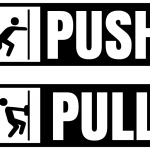Designing for Behavior Change: New Models, New Directions, Panel
 Q: What are we talking about when we talk about behavior change?
Q: What are we talking about when we talk about behavior change?
A’s: Helping people to form habits and behavior that is beneficial to the person. We want to create something sustainable, and also do something ethical and improves peoples lives. There’s literature and theory about social psychology in UX about helping to change people’s behavior in a way that’s productive and beneficial to them.
When we talk about behavior change models, we mean the ways that people have identified to change behavior. Most of the models are agnostic – not specific to any one behavior. If they weren’t agnostic, then you’d never be able to learn them all. Instead, these are ways to use historical research (from Skinner/Pavlov up to Nir Eyal and BJ Fogg) for best practices that help people do something, even if they don’t act in the exact right way the model suggests.
These models are as much explanations of why people behave the way they behave as ways to help them change.
Q: How does this work in real life, with actual techniques?
A: One term used often is “practice.” That how behaviors become engrained over time. The question becomes: can we allow success to be the thing that sustains, and turns external motivation into intrinsic?
You start with information: are the people educated in what about this is good for them? Then motivation: do they want to do it? Then skill: do they know how to do it?
You also look at how to shift from extrinsic motivation (money, gifts, prizes), in intrinsic – what are their intrinsic motivators? Are they social, or success-based, or something else?
You also need to figure out the connection between what’s done in the app and what happens outside the app. If the goal is to get the person to fill their prescriptions, how do we get from doing something in the app to actually filling their prescription?
In other words, you start with a model, but when the user starts to be “non compliant” with the model, switch to techniques to understand how to help them.
Q: As a designer, how do you identify what might go wrong?
A: I go through a sort of rolodex of key terms, like motivation and other common issues. There’s no one best model. It pushes you beyond where you typically go.
We also need to know to be realistic about the adoption rate, given what we know.
Bonus: Resources!
An overview of influential behavior change theories
- Learning Theories, BF Skinner; Ivan Pavlov
- Health Belief Model, Irwin Rosenstock
- Social Cognitive Theory, Albert Bandura
- Transtheoretical Model, James Prochaska & Carlo DiClemente
- Information/Motivation/Behavioral Skills Model, Jeffrey Fisher & William Fisher
- Fogg Method, B.J. Fogg
- Hooked Model, Nir Eyal


